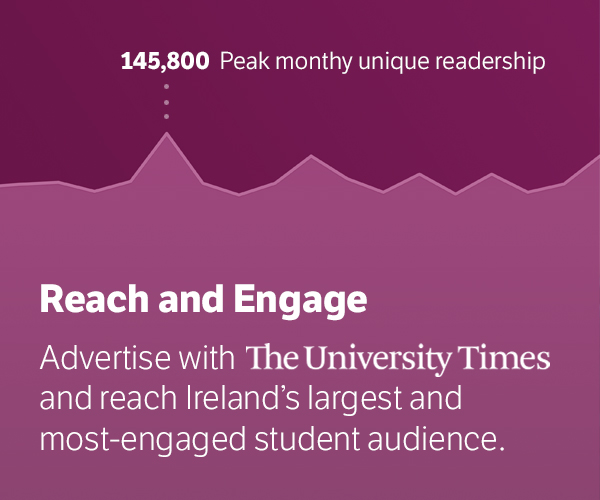When applying to universities, many prospective students are quick to stumble upon university ranking websites. The two most important of which are the QS World Rankings and the Times Higher Education rankings. In the past ten years, Trinity has stayed below the top 70 in the QS rankings, and below the top 100 in the Times. How has this come to be despite Trinity’s seemingly historically prestigious reputation?
It is no secret that university ranking systems have been criticised in the past. This can be attributed to various biases within their grading systems, the fact that they are provided and maintained by for-profit corporations, or even minor corruption scandals. Trinity is an example of an institution, that despite its consistently successful student-body, has fallen victim to overgeneralised metrication.
Trinity is one of the seven “ancient universities” of the world, the sister college to Cambridge and Oxford, and has cemented itself in history for having fostered great minds including Jonathan Swift, Ernest Walton, Oscar Wilde, and more recently the likes of William Campella. Trinity has been in the inner circle of prestigious academia for centuries and has thrived under this reputation. This is not least reflected in visits by global leaders such as Joe Biden and Angela Merkel and events such as the annual Ambassadors’ Ball. Trinity is a household name. Unfortunately, today it seems as though this image is deteriorating. In this day and age, academic prestige has been reduced to oversimplified, forcefully quantified statistics; a system that unfairly undermines Trinity’s rich legacy of sophistication and academic excellence.
QS and Times heavily emphasise “research impact,” often measured through citation counts and publication frequency, which is not necessarily one of Trinity’s strengths. This system disproportionately favours larger institutions with extensive resources focusing on high-output research disciplines and typically specialising in math and science. Trinity’s research, while impactful, might not match the sheer output of larger universities with more funding and emphasis on publishing, even if they achieve exceptional results per euro spent.
Research impact is a large factor in the ranking methodologies of both QS and Times. This rates an institution’s research capabilities by combining various factors, including papers per faculty, citations per paper and research funds. While Trinity produces valuable research, including, for example, a recent breakthrough in gene therapy for eye disease, it is unfavorable to compare its approach to those of institutions backed by large corporations. The extent of corporate backing differs at Trinity, as, unlike its American counterparts, financial success is not its core mission. Ranking systems fail to take these nuanced differences into account. As a result, research rankings have become a disproportionate comparison of funding, posing the question whether universities should be rewarded for being run like businesses.
In addition to “research impact,” both QS and Times ranking methodologies include employer reputation surveys. These surveys are often more favorable to wealthier, private institutions with larger marketing budgets and the resources to heavily invest in global outreach and branding campaigns. By funding international partnerships, high-profile advertising, and targeted recruitment initiatives, these universities ensure greater visibility among employers and academics worldwide, which translates into higher scores in reputation-based surveys. Less generously funded institutions like Trinity, despite the academic rigor and historical prestige, often lack the financial resources to compete at this scale. This disparity means that institutions with deeper pockets can influence perceptions more effectively, taking away the value of the actual quality of education or effectiveness of research they provide. The validity of these surveys has also been questioned, with allegations of bias and corruption. There have been instances where universities paid for additional services, resulting in a more favorable assessment, or have financially incentivized faculty to skew survey responses in their favor. For example, the QS Stars rating system requires universities to pay thousands of euros in fees for audits and licensing, creating a direct link between financial investment and publicised ratings, while the use of paid survey platforms has raised concerns about the integrity of data collection. Brian Leiter, a prominent University of Chicago professor, has criticized QS rankings as “a fraud on the public” due to such practices.
It is clear that in the 21st century, an institution’s quality of education is not enough to uphold its credibility. Academia has been corporatised and ranking systems provide the perfect playing field for universities to put their multibillion euro endowments to the test. As a public, government funded university, this is a race which Trinity can not compete in. But does this mean it will be left behind? In a 2019 interview with the Irish Independent, Trinity’s Provost, Linda Doyle, stated, “Looking at the scores behind the rank, our performance is steady. However, this is not good enough in a world that sees many of our global competitors improve their scores through focused and sustained investment.”
The current model Trinity operates under may not reflect the institution’s prowess in rankings, however this does not take away from the university’s quality. As long as Trinity manages to produce respectable research and alumni, there will be no meaningful significance behind its relatively low ranking. Rather, the issue lies in our attitudes towards what determines a university’s quality. It is only when we prioritise superficial categorisation and refuse to look beyond it, that Trinity may truly become an “ancient university”, and a name of the past. However, we have yet to see this problem fully unfold, as Trinity’s name still has merit and there is good reason to believe it will maintain it.
Despite the obvious flaws, the rankings are here to stay. The United Nations Educational, Scientific, and Cultural Organization (UNESCO) has been quoted noting that “rightly or wrongly, they are perceived as a measure of quality and so create intense competition between universities all over the world”. Currently, Trinity seems to be at a crossroads. There is neither criticism of the flawed system, nor are there any signs of an effort to adapt to it. It seems as though Trinity has become complacent to the very system that is punishing it. A brief look at the Trinity website will reveal a celebration of departments placing within the global top 100. The argument of whether more is deserved is rarely called into question. It is up to Trinity whether it wants to risk adapting to meet the system’s expectations, or take an independent approach capitalising upon its strong historic foundations.







